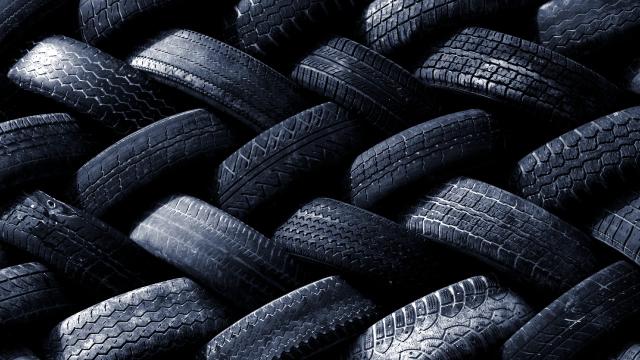Engineers in Melbourne have finally found a way to use rubber from discarded tyres to replace 100 per cent of the conventional components in concrete, like gravel and crushed rock. The recycled tyre rubber concrete also meets building codes and promises to boost the circular economy.
According to the team from RMIT University, the concrete will be greener and lighter than conventional mixtures and will significantly reduce manufacturing and transportation costs.
The rubber concrete is basically killing two birds with one stone in regards to sustainability. Not only are they repurposing rubber tyres that would just end up in landfill but they’re also finding a way to make concrete without having to create new materials. A win-win, really.
Up until now, efforts to replace a majority of the aggregates of concrete with rubber have produced weaker mixtures that failed to meet the required standards. That was until the team at RMIT University found a way to replace 100 per cent of it with rubber.
Whilst small amounts of rubber particles from tyres have already been used to replace some gravel and rock elements, this is the first time it’s been done on this scale.

The team’s study, which was published in the Resources, Conservation & Recycling journal, revealed the manufacturing process where the traditional coarse elements of concrete have been completely replaced by rubber taken from used car tyres, thereby creating a lightweight structural mixture.
Speaking about the study, Mohammad Momeen Ul Islam, lead author and PhD researcher from RMIT University’s School of Engineering, said that the findings debunked the popular theory about what can be achieved when using recycled rubber particles in concrete.
“We have demonstrated with our precise casting method that this decades-old perceived limitation on using large amounts of coarse rubber particles in concrete can now be overcome,” Islam said.
“The technique involves using newly designed casting moulds to compress the coarse rubber aggregate in fresh concrete that enhances the building material’s performance.”
Apart from creating sustainable concrete that will obviously work to improve environmental stress, the rubber mixture will also unlock economic benefits too.
Professor Jie Li said that a major portion of traditional concrete is made from coarse aggregate but “replacing all of this with used tyre rubber can significantly reduce the consumption of natural resources and also address the major environmental challenge of what to do with used tyres”. The rubber concrete will also benefit a range of developments like ‘low-cost housing projects in rural and remote parts of Australia as well as other countries around the world.’
Basically, tyre rubber concrete can do a whole lot of good.

The reason why this is such a great initiative is that Australian used tyres cannot be exported so they will end up in landfills, in dumps or in lots and constantly having to produce new ones wreak havoc on the environment. Moreso, around 1.2 billion used tyres will be disposed of every year worldwide by 2030, according to RMIT.
That’s why coming up with new modes of recycling and reprocessing used tyres locally is desperately needed.
Islam said that the team’s next steps were to reinforce the concrete to see how it can work within structural elements. To be as cost-effective as possible, the manufacturing process can be scaled up within a precast concrete industrial setting in Australia and overseas.
We love seeing used car tyres getting a second life and a second chance to do some good in the world.
Although there are copious amounts of used tyres laying around in Australia, EVs don’t come with a spare tyre. Maybe we can find a way to upcycle used rubber to create spares for EVs (and work out how to squeeze them into the car’s build).
